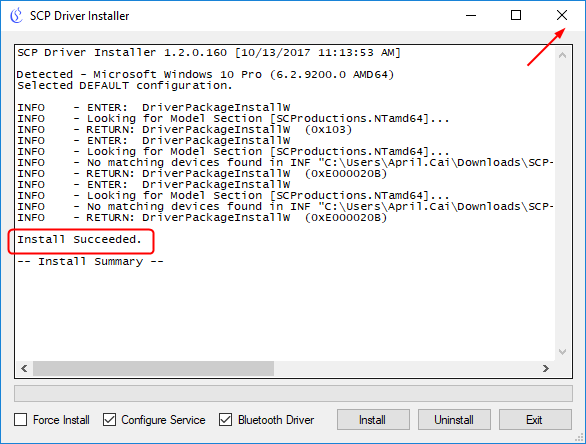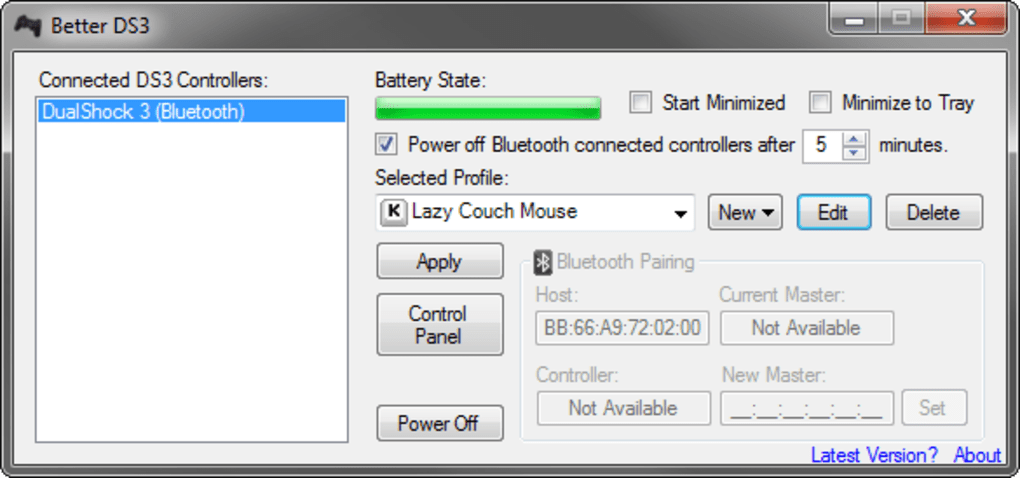

- #Installing better ds3 tool driver manually install#
- #Installing better ds3 tool driver manually drivers#
- #Installing better ds3 tool driver manually update#
- #Installing better ds3 tool driver manually windows 10#
Had to search, delete the DS3 files that showed up, and search and delete again until no DS3 files showed up with the search.ģ.

Then searched for "DS3" and deleted all files I could find that had "DS3" in them. Typed "regedit" in the search bar and opened it.
#Installing better ds3 tool driver manually drivers#
Uninstalled the Motioninjoy drivers here "control panel -> programs and features"Ģ. You will more than likely note that on the next reboot (after the inf updater runs it will require a reboot) some hardware is re-detected and updated as required so the driver dates may change (based on looking at the individual driver info in Device Manager, that is).Try this, it helped me a very long time ago when motionjoy was conflicting with my wireless mouse drivers.ġ. I don't think this type of functionality exists for other chipset brands (AMD/ATI/Nvidia/etc) but it definitely helps if you have an Intel chipset-based motherboard and is recommended over just the typical "double-click execute" which doesn't do nearly as thorough a job.Īlso, note that inf files are not technically drivers but are used as hardware identifiers so the proper drivers (aka the latest compatible ones available) can then be loaded if needed/necessary. inf files for all the compatible hardware detected by the installer. This will bring a machine up to the latest possible. inf file that's available for the given hardware configuration of the machine you're using at that time, not just a few of them.

The -overall switch tells the installer to install/update every.
#Installing better ds3 tool driver manually update#
Recommendation: unless you have an actual requirement for something the manufacturer's updated driver provides (could be a Control Panel thing as noted, or just a better performing driver for a GPU since again the Windows Update drivers are meant for stability and not performance) I'd say use the distribution drivers and let Windows Update handle updating them whenever a new one becomes available. If I use the Dell supplied driver QuickSync offloads all the encoding to the GPU (when I select that encoder) but with the Intel provided driver (which is a newer version) the QuickSync functionality doesn't work properly - it pushes the encoding to the CPU and it takes a little longer. For example, in my situation with the Dell Latitude E6420 laptop I have it uses the standard Intel 3000 GPU as part of the CPU (Sandy Bridge Core i7) - the Dell supplied driver adds some functionality that the plain old vanilla Intel-distributed 3000 GPU driver doesn't (like QuickSync working properly which allows me to use the GPU to do accelerated video encoding). The only exception might be for laptops which sometimes to actually have drivers tailored for that specific hardware.
#Installing better ds3 tool driver manually install#
But if you must have to get some additional functionality not provided with the distribution or Windows Update drivers then as long as the driver version is newer I'd say it can't hurt to install whatever the actual manufacturer of the given hardware provides. So it's a safe bet to say the distribution and Windows Update versions will keep your machine running reliably and stable for sure. They're sent to Microsoft for testing in their labs to ensure compatibility and stability first and foremost and if they pass all Microsoft's testing then they get added to the distribution and after that is released then updated versions go to Windows Update - the other thing is that those drivers tend to leave out some additional functionality depending on the device itself (graphics drivers won't come with the Control Panel applets or driver configuration tools like the Catalyst Control Center for ATI/AMD hardware or the Nvidia Control Panel for Nvidia hardware, sound cards might not come with a Control Panel applet for configuration as well, etc).
#Installing better ds3 tool driver manually windows 10#
One would say that the drivers provided to Windows Update and those included in the Windows 10 distribution files (on the ISO or whatever) are "more stable" overall and designed to make sure the hardware functions as expected but they are most definitely not designed for performance.


 0 kommentar(er)
0 kommentar(er)
